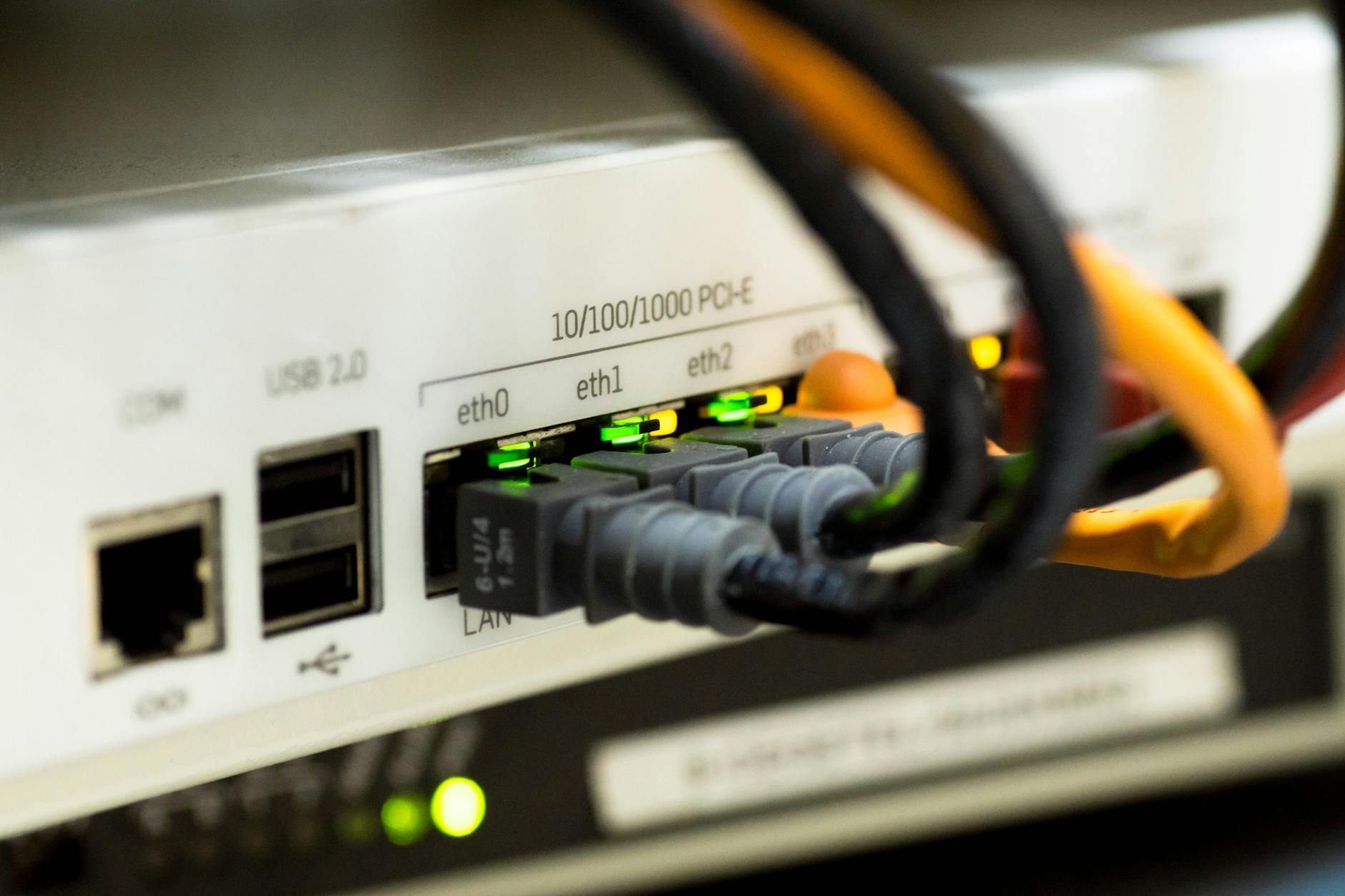WAN Edge deployment in Cisco SDWAN
WAN Edge deployment in Cisco SDWAN
Are you tired of managing complex and inefficient wide area networks? 🤔 Enter Cisco SDWAN, a revolutionary solution that’s transforming how businesses connect their distributed locations. But with great power comes great responsibility – deploying WAN Edge devices in an SDWAN environment can be a daunting task for even seasoned network administrators.
Imagine seamlessly connecting your branch offices, data centers, and cloud applications while reducing costs and improving performance. Sounds too good to be true? It’s not! With proper WAN Edge deployment in Cisco SDWAN, you can turn this dream into reality. However, the journey isn’t without its challenges. From understanding the intricacies of SDWAN to optimizing WAN Edge performance, there’s a lot to navigate.
In this comprehensive guide, we’ll walk you through the essential steps of WAN Edge deployment in Cisco SDWAN. From preparing for deployment to integrating with vManage and implementing best practices, we’ve got you covered. So, buckle up as we embark on this exciting journey to revolutionize your network infrastructure! 🚀
Understanding Cisco SDWAN

Key features and benefits
Cisco SDWAN offers a robust set of features and benefits that revolutionize network management:
- Centralized management
- Application-aware routing
- Advanced security
- Cloud integration
- Network analytics
These features provide significant advantages for businesses:
| Feature | Benefit |
|---|---|
| Centralized management | Simplified network operations |
| Application-aware routing | Improved application performance |
| Advanced security | Enhanced network protection |
| Cloud integration | Seamless cloud connectivity |
| Network analytics | Data-driven decision making |
Components of SDWAN architecture
The Cisco SDWAN architecture comprises four main components:
- vManage: Centralized network management system
- vSmart Controllers: Orchestrate control plane functions
- vBond Orchestrators: Facilitate initial bring-up of SDWAN devices
- WAN Edge Routers: Physical or virtual devices at branch locations
Advantages over traditional WAN
Cisco SDWAN offers several advantages over traditional WAN solutions:
- Flexibility: Easily adapt to changing network requirements
- Cost-effectiveness: Reduce reliance on expensive MPLS links
- Scalability: Quickly deploy and manage new sites
- Performance: Optimize application delivery across the network
- Visibility: Gain deep insights into network and application performance
By leveraging these advantages, organizations can create more agile, efficient, and resilient networks that better support their business objectives.
Preparing for WAN Edge Deployment

A. Network assessment and planning
Before deploying Cisco SDWAN WAN Edge devices, a thorough network assessment is crucial. This process involves evaluating your existing infrastructure, identifying potential bottlenecks, and planning for future growth. Here’s a checklist to guide your assessment:
- Current network topology
- Bandwidth requirements
- Application performance needs
- Existing security measures
- Future scalability projections
| Assessment Area | Key Considerations |
|---|---|
| Topology | WAN links, Internet breakouts, branch offices |
| Bandwidth | Peak usage, critical applications, QoS requirements |
| Performance | Latency-sensitive apps, traffic prioritization |
| Security | Compliance needs, threat landscape, encryption |
| Scalability | Expected growth, new sites, additional services |
B. Hardware and software requirements
Selecting the right hardware and software is essential for a successful WAN Edge deployment. Consider the following:
- Router models:
- ISR 1000 series for small branches
- ISR 4000 series for medium to large branches
- ASR 1000 series for data centers and large campuses
- Software versions:
- IOS XE SD-WAN
- vManage, vSmart, and vBond software
C. Licensing considerations
Cisco SDWAN requires specific licenses to enable full functionality:
- DNA Essentials
- DNA Advantage
- DNA Premier
Each tier offers different features, so choose based on your network requirements and budget constraints.
D. Security considerations
Implementing robust security measures is critical in SDWAN deployments:
- Zero Trust Security model
- End-to-end encryption
- Segmentation and micro-segmentation
- Next-generation firewalls
- Intrusion Prevention Systems (IPS)
Now that we’ve covered the preparation phase, let’s move on to the actual configuration of WAN Edge devices.
Configuring WAN Edge Devices
Initial setup and bootstrapping
The initial setup and bootstrapping of WAN Edge devices in Cisco SDWAN is crucial for establishing a strong foundation. This process involves:
- Physical installation
- Basic configuration
- Connecting to vManage
Here’s a step-by-step guide:
- Connect the WAN Edge device to power and network
- Access the device via console or management interface
- Configure basic settings (hostname, IP address, credentials)
- Install the SDWAN software image if not pre-installed
- Generate and install certificates for secure communication
- Connect the device to vManage for centralized management
| Step | Description | Importance |
|---|---|---|
| 1-2 | Physical setup and access | Essential for initial connectivity |
| 3-4 | Basic configuration and software | Prepares device for SDWAN operation |
| 5-6 | Security and management | Ensures secure integration with SDWAN fabric |
VPN configuration
VPN configuration is essential for segmenting traffic and ensuring secure communication across the SDWAN network. Key aspects include:
- Creating VPN instances
- Configuring interfaces within VPNs
- Establishing VPN routing policies
VPN 0 is typically used for transport, while VPN 512 is reserved for management. Custom VPNs (1-511) can be created for different applications or departments.
Now that we’ve covered the initial setup and VPN configuration, let’s move on to routing protocols and policies, which are crucial for efficient traffic management in your SDWAN network.
Integrating WAN Edge with vManage
Device onboarding process
The integration of WAN Edge devices with vManage begins with the onboarding process. This crucial step ensures seamless communication between the edge devices and the centralized management platform. Here’s a breakdown of the key steps:
- Device discovery
- Authentication
- Configuration push
- Verification
| Step | Description | Importance |
|---|---|---|
| Discovery | vManage identifies new WAN Edge devices | Enables automatic integration |
| Authentication | Verifies device credentials | Ensures security |
| Config Push | Sends initial configuration to device | Establishes basic connectivity |
| Verification | Confirms successful onboarding | Ensures operational readiness |
Template creation and application
Once devices are onboarded, the next step is to create and apply templates. Templates streamline configuration management across multiple devices, ensuring consistency and reducing manual errors.
- Create feature templates for common configurations
- Combine feature templates into device templates
- Apply device templates to WAN Edge devices
- Validate template application
Monitoring and troubleshooting
vManage provides powerful monitoring and troubleshooting capabilities for WAN Edge devices:
- Real-time status monitoring
- Performance metrics collection
- Alarm and event management
- Troubleshooting tools (e.g., traceroute, ping)
Policy configuration
The final step in integrating WAN Edge with vManage involves configuring policies to control traffic flow and security:
- Create centralized policies for network-wide control
- Define localized policies for specific site requirements
- Implement QoS policies for traffic prioritization
- Configure security policies to protect the network
With these steps completed, your WAN Edge devices will be fully integrated with vManage, enabling centralized management and optimization of your SD-WAN network. Next, we’ll explore how to optimize WAN Edge performance to ensure your network operates at peak efficiency.
Optimizing WAN Edge Performance

Traffic engineering techniques
Traffic engineering is crucial for optimizing WAN Edge performance in Cisco SDWAN. Here are some key techniques:
- Quality of Service (QoS)
- Path selection
- Load balancing
- Bandwidth allocation
| Technique | Description | Benefits |
|---|---|---|
| QoS | Prioritizes critical traffic | Ensures low latency for important applications |
| Path selection | Chooses optimal routes | Improves overall network performance |
| Load balancing | Distributes traffic across multiple links | Maximizes resource utilization |
| Bandwidth allocation | Assigns bandwidth to specific applications | Prevents bandwidth hogging |
Application-aware routing
Application-aware routing enhances WAN Edge performance by intelligently directing traffic based on application requirements. This technique:
- Identifies applications in real-time
- Applies routing policies based on application type
- Ensures optimal path selection for critical applications
WAN acceleration and optimization
To further improve WAN Edge performance, consider implementing:
- Data compression
- Protocol optimization
- Caching
- TCP acceleration
These techniques reduce bandwidth consumption and improve application responsiveness across the WAN.
Failover and redundancy strategies
Implementing robust failover and redundancy strategies is essential for maintaining optimal WAN Edge performance. Key considerations include:
- Dual WAN links
- Automatic failover mechanisms
- Active-active load balancing
- Geographic redundancy
By implementing these optimization techniques, you can significantly enhance the performance and reliability of your Cisco SDWAN WAN Edge deployment. Next, we’ll explore best practices to ensure a successful implementation.
Best Practices for WAN Edge Deployment
Scalability considerations
When deploying Cisco SDWAN WAN Edge devices, scalability is crucial for future-proofing your network. Consider the following:
- Bandwidth capacity planning
- Device sizing and performance
- Site expansion potential
| Factor | Consideration |
|---|---|
| Bandwidth | Plan for 3-5 years of growth |
| Device sizing | Choose models with room for expansion |
| Site expansion | Design for easy addition of new locations |
Change management procedures
Implementing robust change management procedures ensures smooth WAN Edge deployments:
- Develop a detailed change plan
- Create rollback procedures
- Schedule maintenance windows
- Communicate changes to stakeholders
- Document all modifications
Documentation and knowledge transfer
Proper documentation and knowledge transfer are essential for long-term success:
- Create detailed network diagrams
- Document configuration templates
- Develop troubleshooting guides
- Conduct training sessions for IT staff
Continuous monitoring and improvement
To maintain optimal WAN Edge performance:
- Implement proactive monitoring tools
- Regularly review performance metrics
- Conduct periodic security audits
- Stay updated with Cisco SDWAN releases
- Solicit user feedback for continuous improvement
By following these best practices, organizations can ensure a robust, scalable, and efficient WAN Edge deployment in their Cisco SDWAN environment. Regular assessment and refinement of these practices will help maintain network performance and reliability over time.
Deploying WAN Edge devices in Cisco SDWAN is a crucial step in modernizing network infrastructure. By understanding the fundamentals of Cisco SDWAN, preparing thoroughly, and following best practices, organizations can seamlessly integrate WAN Edge devices into their network architecture. Proper configuration and integration with vManage ensure optimal performance and management capabilities.
As networks continue to evolve, leveraging Cisco SDWAN’s WAN Edge deployment offers numerous benefits, including improved network visibility, enhanced security, and simplified management. By implementing the strategies outlined in this guide, IT professionals can confidently deploy WAN Edge devices, optimize their performance, and create a more agile and efficient network infrastructure that meets the demands of today’s digital landscape.











